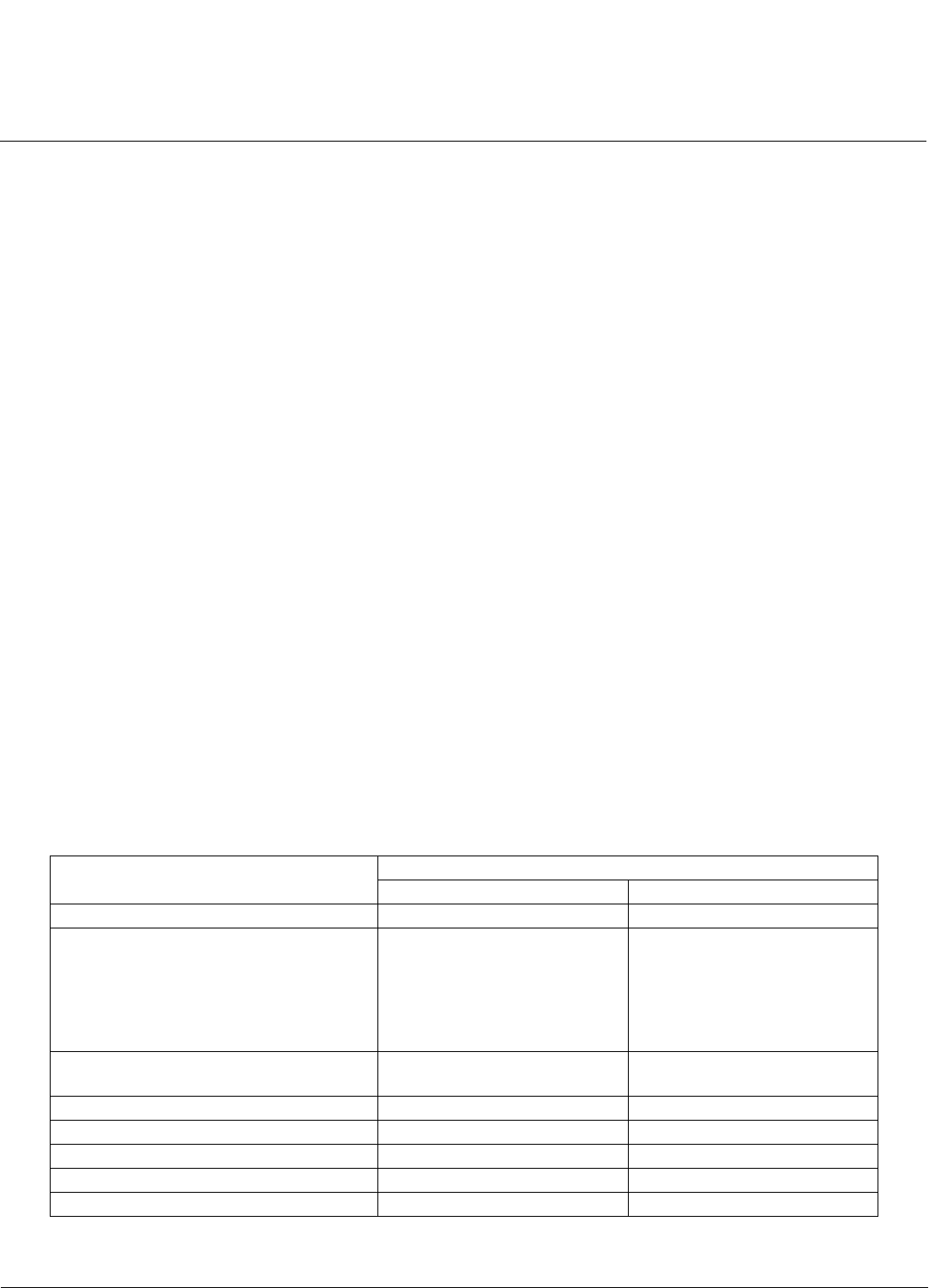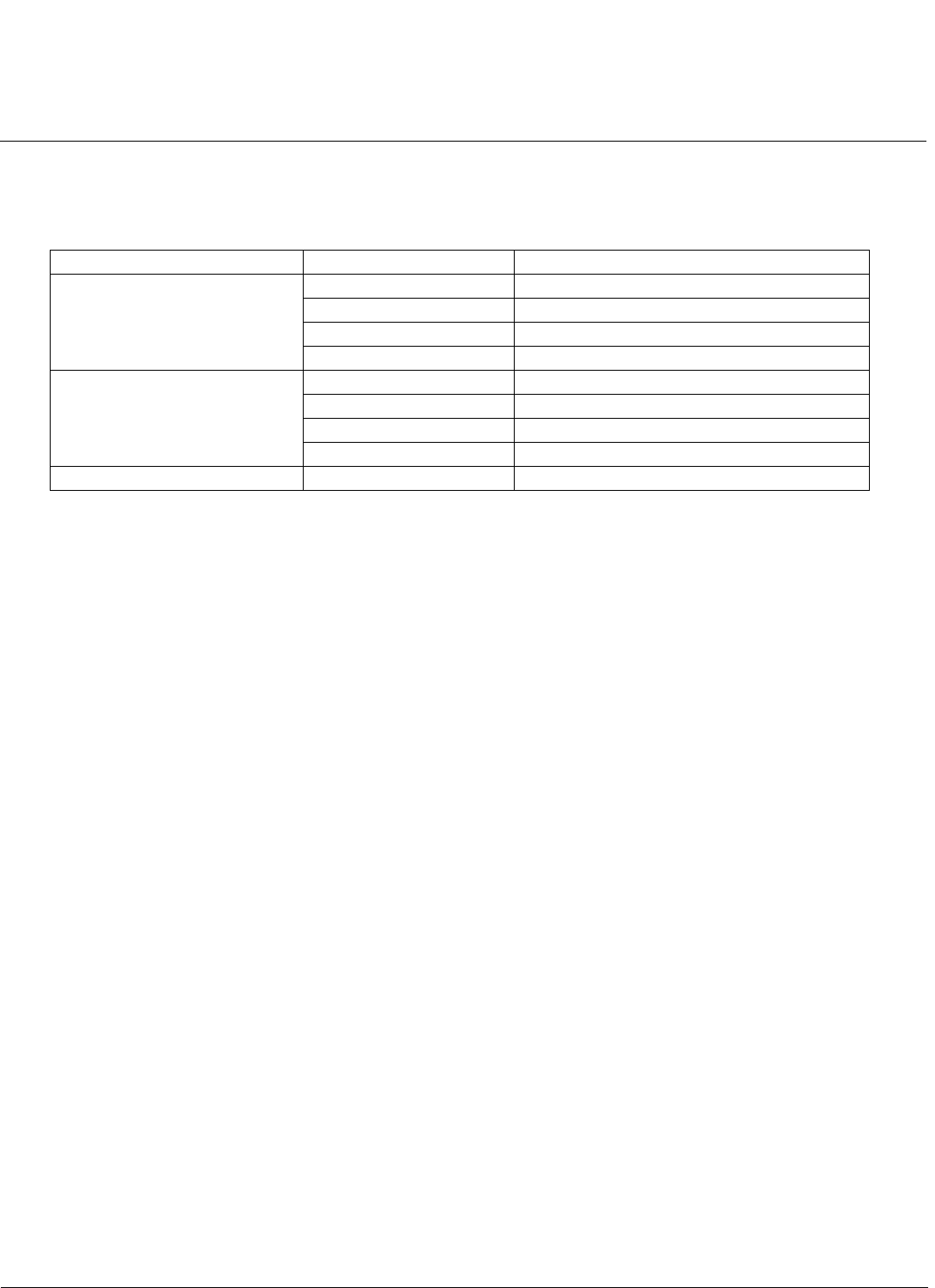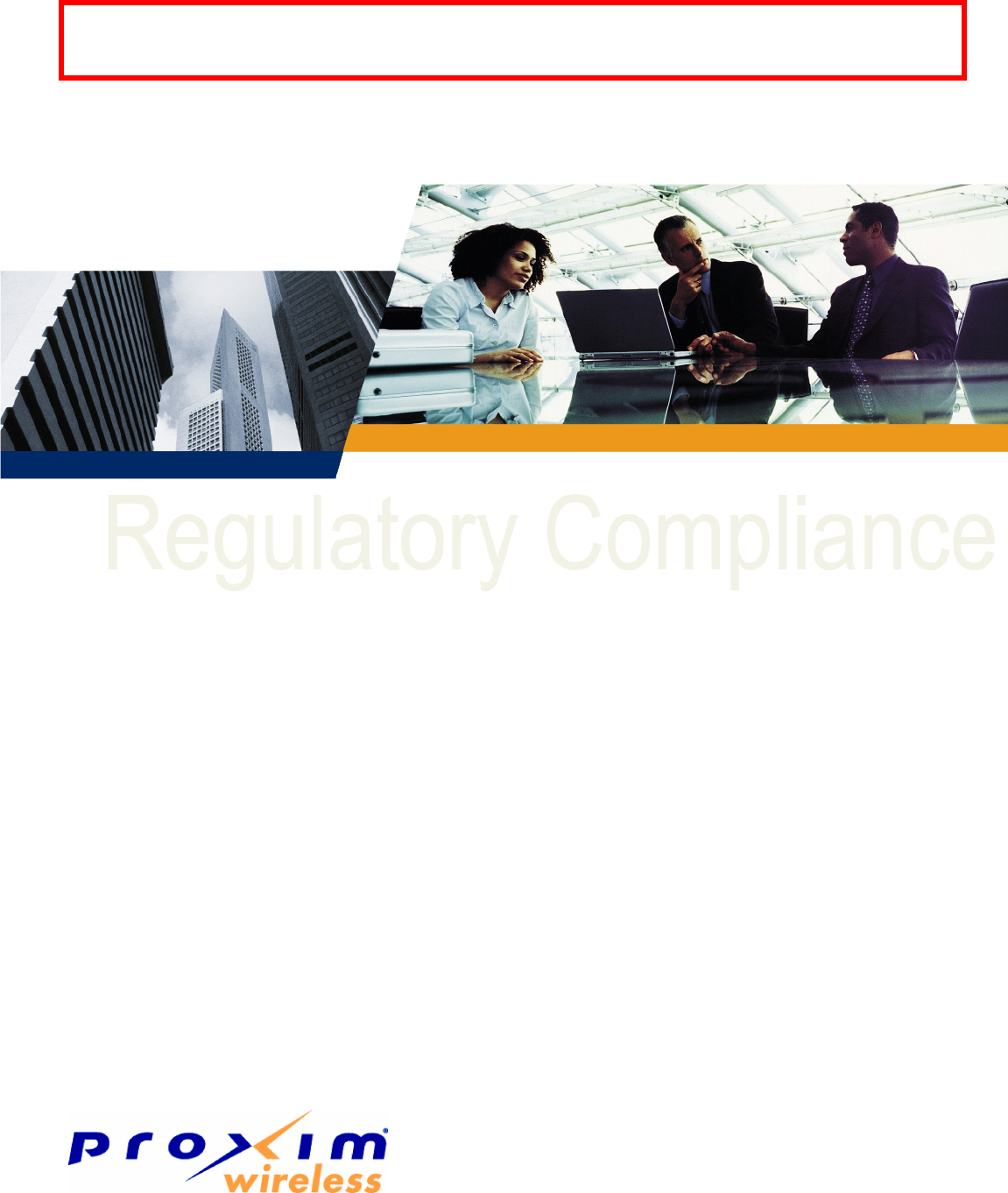Proxim Wireless L49U24U50 Wireless Access Point User Manual RegulatoryFlyer
Proxim Wireless Corporation Wireless Access Point RegulatoryFlyer
Contents
- 1. User manual
- 2. manual
manual

AP-4000/4000M/4900M Safety and Regulatory Information
2
Copyright
© 2007 Proxim Wireless Corporation. All rights reserved. Covered by one or more of the following U.S. patents: 5,231,634; 5,875,179;
6,006,090; 5,809,060; 6,075,812; 5,077,753. This user’s guide and the software described in it are copyrighted with all rights reserved. No part
of this publication may be reproduced, transmitted, transcribed, stored in a retrieval system, or translated into any language in any form by any
means without the written permission of Proxim Wireless Corporation.
Trademarks
ORiNOCO, Proxim, and the Proxim logo are trademarks of Proxim Wireless Corporation. All other trademarks mentioned herein are the
property of their respective owners.
ORiNOCO AP-4000/4000M/4900M Safety and Regulatory Guide
P/N 73312r2 May 2007

Products Covered in the Guide AP-4000/4000M/4900M Safety and Regulatory Information
3
Products Covered in the Guide
This document contains important safety and regulatory compliance information for the following products:
IMPORTANT!
Visit http://support.proxim.com for the latest safety and regulatory compliance information for this product.
Please read this document before installing and using your product, and save these instructions.
Product Model Numbers
ORiNOCO Tri-Mode Access Point AP-4000 AP-AG-AT-02
8670-AU
8670-AU2
8670-BR
8670-CN
8670-EU
8670-EU2
8670-HK
8670-JP
8670-JP2
8670-SG
8670-SK
8670-TW
8670-UK
8670-US
8670-US2
8670-WD
ORiNOCO Tri-Mode Access Point AP-4000M AP-AG-AT-02
8670M-AU
8670M-AU2
8670M-BR
8670M-CN
8670M-EU
8670M-EU2
8670M-HK
8670M-JP
8670M-JP2
8670M-SG
8670M-SK
8670M-TW
8670M-UK
8670M-US
8670M-US2
8670M-WD
ORiNOCO Quad-Mode Access Point AP-4900M 8670M-PS-US

Safety Information (USA, Canada, & European Union) AP-4000/4000M/4900M Safety and Regulatory
Information
5
Safety Information (USA, Canada, & European Union)
This product has been evaluated to, and complies with, the Safety requirements of UL60950:2000, and IEC60950:1999;
the Standards for the Safety of Information Technology Equipment. When using this device, basic safety precautions
should always be followed to reduce the risk of fire, electric shock and injury to persons, including the following:
• Operate and install this product as described in this manual. This device must be installed and used in strict
accordance with the manufacturer's instructions.
• This product is suitable for installation in air handling spaces (plenum).
• Use only the AC/DC power supply adapter provided. For replacement, contact your local supplier or distributor.
• To avoid the risk of electric shock from lightning, do not use this product during an electrical storm.
• Installation of this product must conform to local regulations and codes.
• When using this product with an external antenna, see the installation documentation provided with the antenna
system.
• No user serviceable parts; all repairs and service must be handled by a qualified service center.

Federal Communications Commission (FCC) Compliance AP-4000/4000M/4900M Safety and Regulatory
Information
6
Federal Communications Commission (FCC) Compliance
This device operates at 2.4 GHz, 5.15 - 5.35 GHz, and 5.725 - 5.85 in compliance with Part 15 of the FCC Rules. In
addition, the 8670M-PS-US model also operates at 4.9 GHz in compliance with Part 90 of the FCC Rules. Operation is
subject to the following two conditions: 1) this device may not cause harmful interference, and 2) this device must accept
any interference received, including interference that may cause undesired operation.
To comply with the FCC radio frequency exposure requirements, the following antenna installation and device operating
configurations must be satisfied:
• The 8670-US2 and 8670M-US2 models must be used indoors only and must be installed to provide a separation
distance of at least 20 cm (8 inches) from all persons.
• Product models using external antennas require professional installation. The antennas used for professional
installation must be fixed-mounted on indoor/outdoor permanent structures with a separation distance of at least
100 cm from all persons.
• Antennas must not be co-located and must not operate in conjunction with any other antenna or transmitter.
See the “Installation and Initialization” chapter in the AP-4000/4000M/4900M User Guide for cabling, mounting, and
antenna installation instructions.
Modifications
Changes or modifications to this device that are not expressly approved by the manufacturer of the product could void the
user’s authority to operate the equipment.
Warnings
This equipment has been tested and found to comply with the limits for a Class B digital device, pursuant to Part 15 of the
FCC Rules. These limits are designed to provide reasonable protection again harmful interference in a residential
installation. This equipment generates, uses, and can radiate radio frequency energy, and, if not installed and used in
accordance with the instructions, may cause harmful interference to radio communications. However, there is no
guarantee that interference will not occur in a particular installation. If this equipment does cause harmful interference to
radio or television reception, which can be determined by turning the equipment off and on, the user is encouraged to try
and correct the interference by one or more of the following measures:
• Reorient or relocate the receiving antenna
• Increase the separation between the equipment and the receiver
• Connect the equipment to an outlet on a circuit different from that to which the receiver is connected
• Consult the dealer or an experienced radio/TV technician for help

Information for Professional Installers AP-4000/4000M/4900M Safety and Regulatory Information
7
Information for Professional Installers
Optionally, a professional installer can connect two to four external antennas to the AP-4000/4000M/4900M.
NOTE: AP-4000 models 8670-US2 and 8670-AU do not provide external antenna connectors for 5 GHz (802.11a)
operation.
All products using external antennas must be professionally installed, and the transmit power of the system must be
adjusted by the professional installers to ensure that the system EIRP is in compliance with the limit specified by the
regulatory authority of the country of application.
Follow the mounting instructions included with your external antenna, and then connect the antenna cable to the AP.
Then see the following sections:
•Adjusting Tx Output Power
•Antenna Types and Maximum Gain
Adjusting Tx Output Power
NOTE: When the system is set to transmit at the maximum power, professional installers must ensure that the maximum
EIRP limit is not exceeded. To achieve this, they may have to add attenuation between the device and the
antenna when a high gain antenna is used.
Use the following formula in combination with the table of EIRP limits in US and EU countries to calculate system transmit
power (based on EIRP limits) of these countries:
Tx Power (dBm) = EIRP Limit (dBm) + FL (dB) – G (dB)
where:
Tx Power = Output power measured at the end of the required coax adaptor cable
EIRP Limit = EIRP limits specified below
FL = Coax loss (including loss of connectors) between the end of the white coax adaptor cable and the antenna
G = Antenna Gain
Transmit output power can be reduced by selecting “Enable TX Power Control” on the Configure > Interfaces > Op
Mode screen. Refer to the AP-4000/4000M/4900M User Guide for more information.
Band EIRP Limit (dBm)
USA and Canada EU
2.4 - 2.4835 GHz (Point-to-Multipoint) 36 20
2.4 - 2.4835 GHz (Point-to-Point) When G < 6: 36
When G ≥ 6, use the following
equation:
36 -
20
4.9 GHz 10 MHz channel: 26
20 MHz channel: 29
NA
5.15 - 5.25 GHz 23 23
5.25 - 5.35 GHz 30 23
5.47 - 5.725 GHz 30 30
5.725 - 5.850 GHz (Point-to-Multipoint) 36 14
5.725 - 5.850 GHz (Point-to-Point) No limit 14
G6–
3
--------------

Information for Professional Installers AP-4000/4000M/4900M Safety and Regulatory Information
8
Antenna Types and Maximum Gain
For devices using external antennas, professional installers should select only the antenna types listed in the following
table, with gain not exceeding the listed maximum gain for each type.
Frequency Band Antenna Type Maximum Gain
2.4 GHz Omni 10
Panel 14
Yagi 14
Parabolic 24
5 GHz Omni 13
Panel 28.2
Sector 17
Parabolic 33.4
4.9 GHZ No restriction No restriction beyond EIRP compliance.

